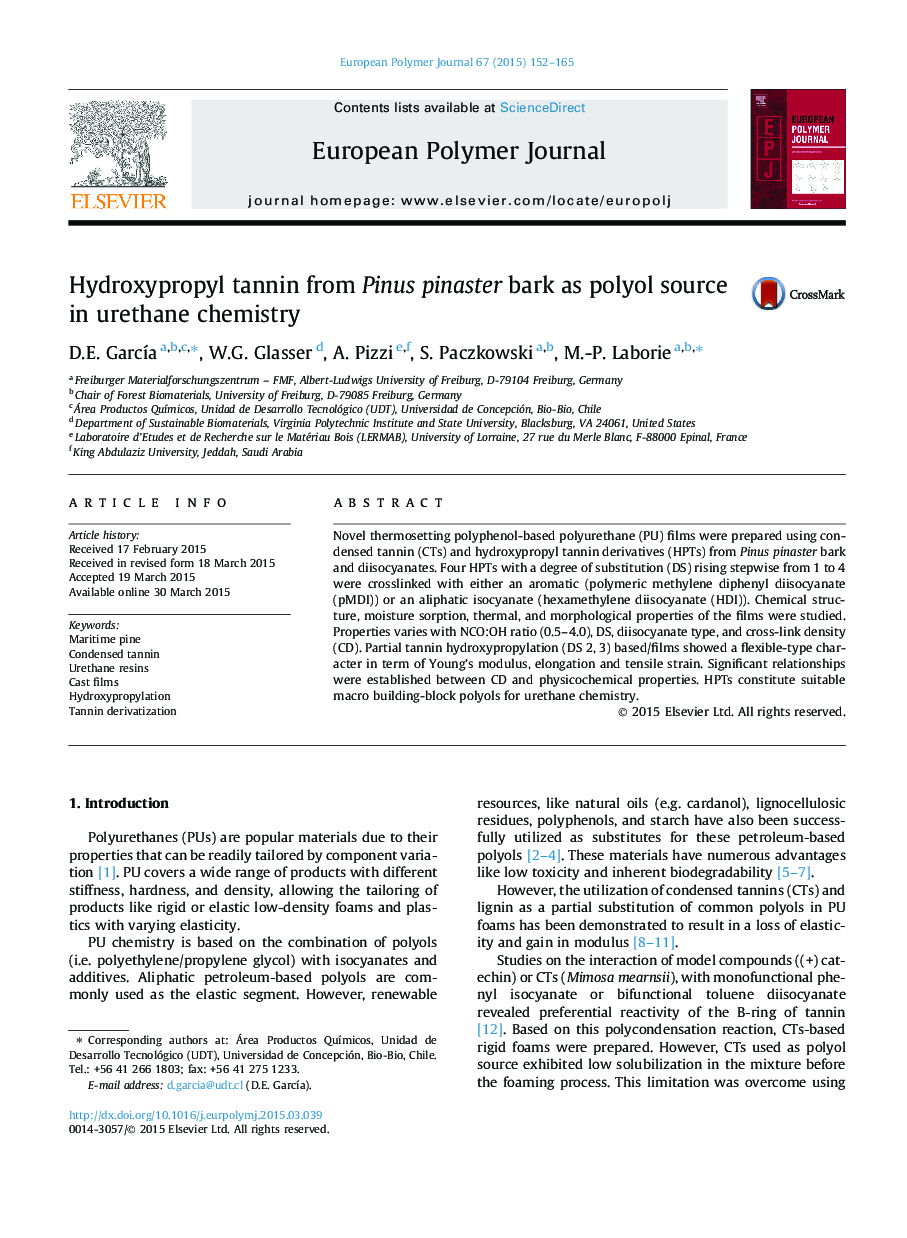| Article ID | Journal | Published Year | Pages | File Type |
|---|---|---|---|---|
| 1400439 | European Polymer Journal | 2015 | 14 Pages |
•Pine bark unmodified and modified tannin are suitable polyol source for the synthesis of polyurethane films.•Physico-chemical properties are affected by the degree of hydroxypropylation, the NCO:OH ratio, and the diisocyanate type.•Polyol hydroxypropylation and diisocyanate-type have influence on the cross-link density and the thermal resistance.•Partial modified pine bark tannin (DS: 2) improves the elasticity of the pMDI-based films.
Novel thermosetting polyphenol-based polyurethane (PU) films were prepared using condensed tannin (CTs) and hydroxypropyl tannin derivatives (HPTs) from Pinus pinaster bark and diisocyanates. Four HPTs with a degree of substitution (DS) rising stepwise from 1 to 4 were crosslinked with either an aromatic (polymeric methylene diphenyl diisocyanate (pMDI)) or an aliphatic isocyanate (hexamethylene diisocyanate (HDI)). Chemical structure, moisture sorption, thermal, and morphological properties of the films were studied. Properties varies with NCO:OH ratio (0.5–4.0), DS, diisocyanate type, and cross-link density (CD). Partial tannin hydroxypropylation (DS 2, 3) based/films showed a flexible-type character in term of Young’s modulus, elongation and tensile strain. Significant relationships were established between CD and physicochemical properties. HPTs constitute suitable macro building-block polyols for urethane chemistry.
Graphical abstractFigure optionsDownload full-size imageDownload as PowerPoint slide
